Birding in Texas, Birding Beaumont
Every spring and fall, birders and nature enthusiasts from all over the world flock to the city of Beaumont in South East Texas to witness one of the great North American bird migrations. In this area of Texas, migratory birds are the main attraction.
I am not really a birder (maybe a better term would be a novice birder) so it hadn’t really occurred to me that birding in Texas was a big thing. That was until the city of Beaumont invited me on a birding trip to the area. After a bit of research, I soon learned that this was actually a serious birding hotspot.
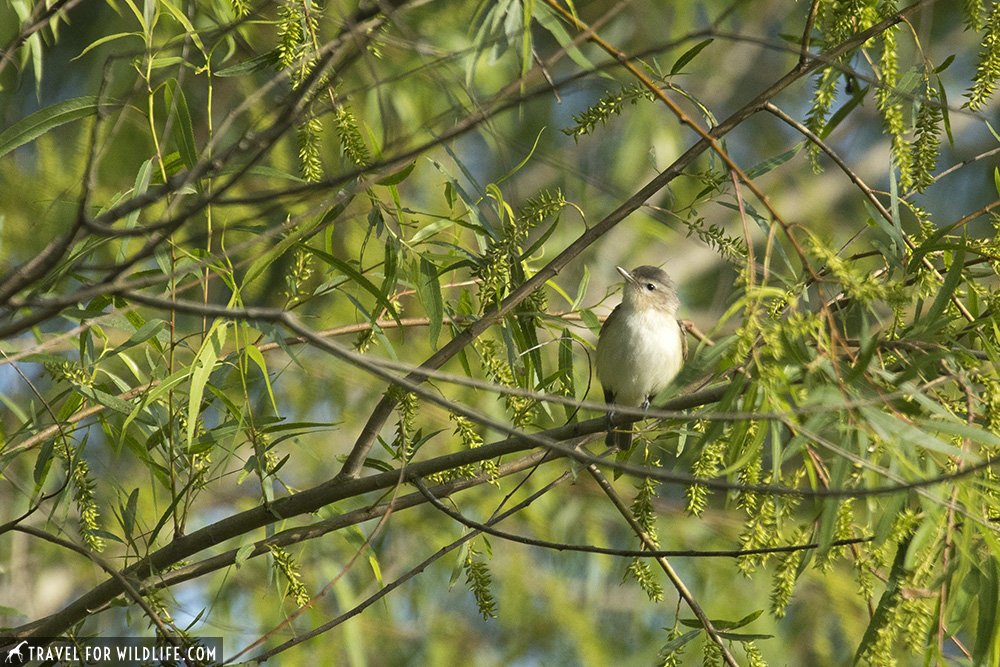
I also learned that we’d have the Sabrewing Tours guides with us which turned out to be a great plus. not only because they could identify every bird and bird song we encountered, but also because after a few days of birding I could go back to my photos and turn my “little brown bird” into a Warbling vireo with some expert advice. (Massive plus of traveling with a guide.)
During my visit we managed to tour a few bird sanctuaries where we saw many North American migratory birds. To be more precise in just three days of birding in Texas we saw over 200 bird species! It was impossible to photograph them all as, of course, some of them was just a small glimpse and some of them were too high up or in a very shady spot. But for all the bird watchers who like to tick boxes, the Beaumont area is an incredible place to bulk up your life list.
I hoped we would see the spectacular Green jay, but they are found a few miles down the road and not in Beaumont. If you have time, drive south to the town of Corpus Christi (also on the Texas gulf coast) for change to spot one! More specifically, just outside Corpus Christi, the Aransas National Wildlife Refuge is one of the spots where you might see them. Aransas is famous for its Whooping Cranes, so while you are visiting the cranes here’s a tip on how to add another bird to your bird list: While it is rare to see them there, the mosaic of oak woodlands in the refuge is the best spot to see a Green jay!
Other birds found at Aransas NWF are Bald eagles, Golden eagles, Ash-throated flycatcher, Least grebe, Sandhill crane, Harris’s hawk, and others. Get the whole Aransas bird list here. Don’t forget to visit the Leonabelle Turnbull birding center at Port Aransas Nature Preserve when you are in the area too.
If I had had more than 3 days, I would’ve driven down there to visit different birding sites in the area.
Table of Contents
- Birding in Texas, Birding Beaumont
- Why Beaumont is the perfect place to see Texas migratory birds
- When is the best time to see the bird migration in Beaumont, Texas? Spring vs Fall
- Bird Sanctuaries in Texas, the Beaumont area
- Where to see Hummingbirds in Texas
- A Note on Responsible Bird Watching
- Visiting Beaumont on a birding trip
- Other Hot Spots in Texas for Great Birding
*This article may contain affiliate links. We receive a small commission at no extra cost to you.*
Why Beaumont is the perfect place to see Texas migratory birds
The Flyways. Is all about the Flyways.
What is a Flyway? Basically, a flyway is a highway for birds. It is the route that birds take during their spring and fall migrations. In the US there are four flyways: the Pacific Flyway, the Central Flyway, the Mississippi Flyway, and the Atlantic Flyway.

What makes the city of Beaumont so special is that it lies in that point in South Texas where the Central and the Mississippi flyways merge, making it a major stop off point for birds crossing the Gulf of Mexico to or from the Yucatan peninsula. It sits at a major migration corridor.
This means that every spring and fall, the area of Beaumont hosts thousands of birds from these two flyways. These Texas migratory birds stop in the area to rest, and to prepare for the next leg of their journey. This is the reason why it is so important that natural areas and nature reserves are protected in this area, so these migrants can stop, refuel, and carry on their long journey up to their breeding grounds in northern US and Canada.
Beaumont and its area also has a great diversity of habitats, from forest to coastal and marshes.
Beaumont is also part of the Great Texas Coastal Birding trail, and is a must stop. Get your Great Texas Coastal birding trail guide here and start planning!
This makes the Beaumont area home of some of the most famous birding sites in Texas, and in the United States.
When is the best time to see the bird migration in Beaumont, Texas? Spring vs Fall
While the number of species won’t vary much, from spring to fall, the bird watching experience will be different, with spring being the favorite of many bird experts. Why is that? Well, for once, spring is chick season. Which means you’ll be able to see nesting behavior of resident birds like cormorants and egrets in addition to the migrants passing by.
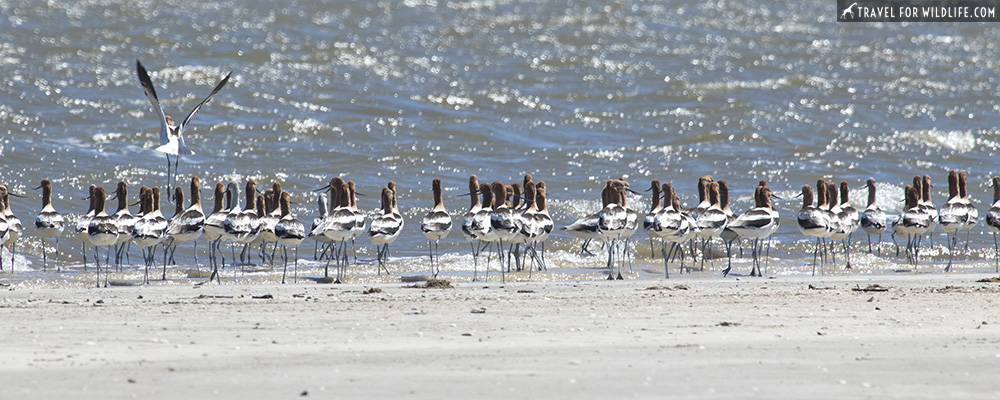
Also, spring has another advantage. During the spring migration, birds that arrive in the Beaumont area are flying all the way from the Yucatan peninsula. It is a long flight for them and they will be very tired once they arrive to mainland. Meaning that they’ll be looking for a place to rest for a while before embarking on the rest of their migration. They need to stop in one of the many bird sanctuaries in Beaumont to recharge.
If you are still unsure as to when to visit Beaumont to go bird watching, check out the Spring and Fall bird counts for 2016, 2017, and 2018 that the Golden Triangle Audubon Society keeps. These will give you an idea of the species and numbers of birds seen during each migration in these years.
Bird Sanctuaries in Texas, the Beaumont area
During my short visit to Beaumont I had the chance to visit many sanctuaries, state parks, and wildlife refuges in the area that serve as a bird sanctuary for the migratory birds in south east Texas. I really wish I had more time so I could observe more behaviors, but with only three days I think we did fantastic in the number of observations. I mean, over 200 species in just three days! I can’t complain.
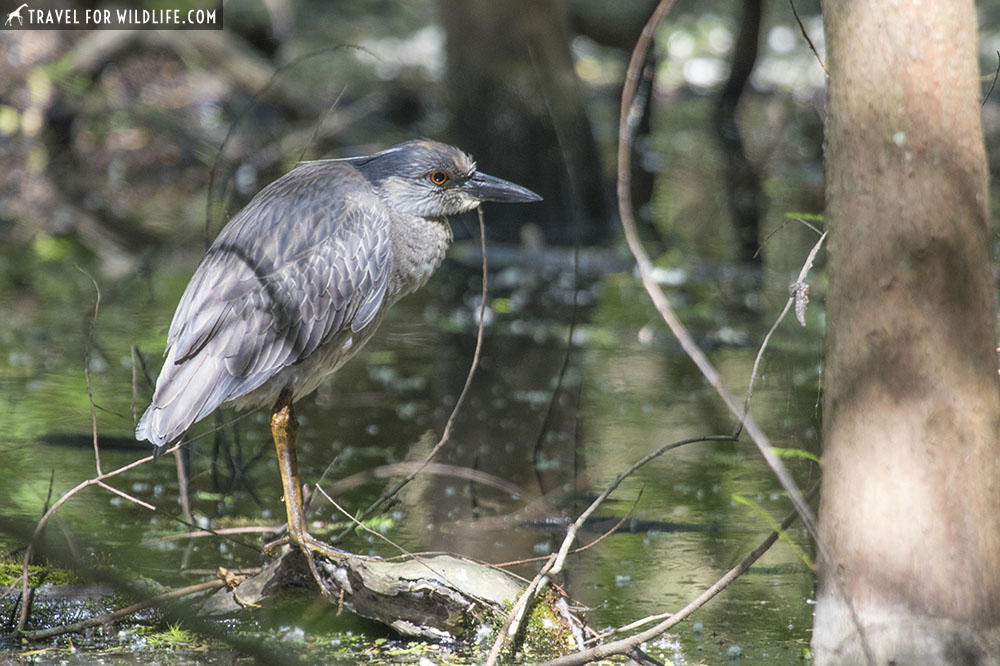
These are the main bird sanctuaries that I visited during my Beaumont stay:
- The Rookery at Smith Oaks Bird Sanctuary
- Cattail Marsh Scenic Wetlands & Boardwalk
- Sabine Woods Sanctuary
- Sea Rim State Park
- Bolivar Flats Shorebird Sanctuary
- Angelina National Forest
You can also find out what bird sightings have been reported at these sites by visiting Texas eBird.
The Rookery at Smith Oaks Bird Sanctuary
Smith Oaks Bird Sanctuary is a 177 acre reserve in High Island with woods, wetlands, ponds, and fields. The rookery is the royal crown of Smith Oaks, a magical spot. As soon as you leave the sunny and dusty parking lot and enter the gates you know you are in a magical place. Then you hear them. Hundreds of egrets, herons, spoonbills, and cormorants are busy building their nests, and feeding their chicks. Mid-April seemed to be the busiest time of the year and there is just so much to see. Time your visit so you can stay for at least a couple of hours.

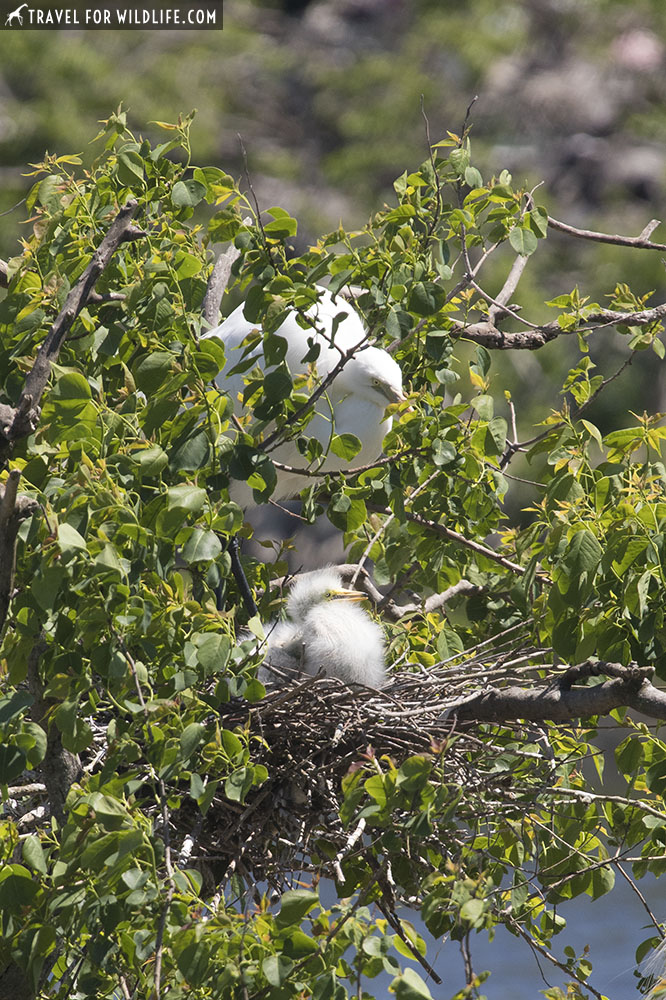



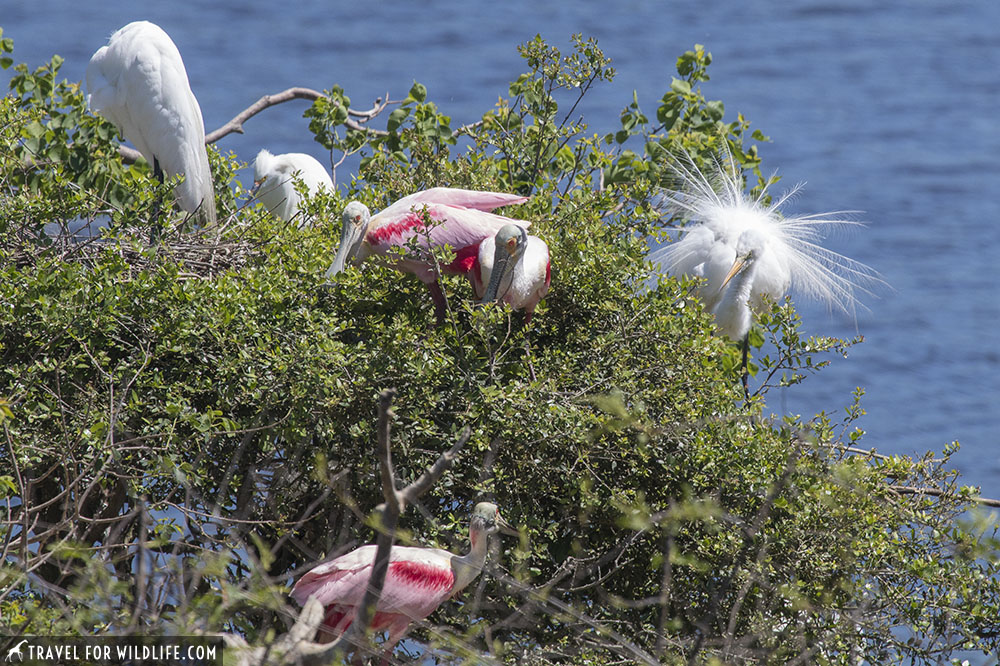

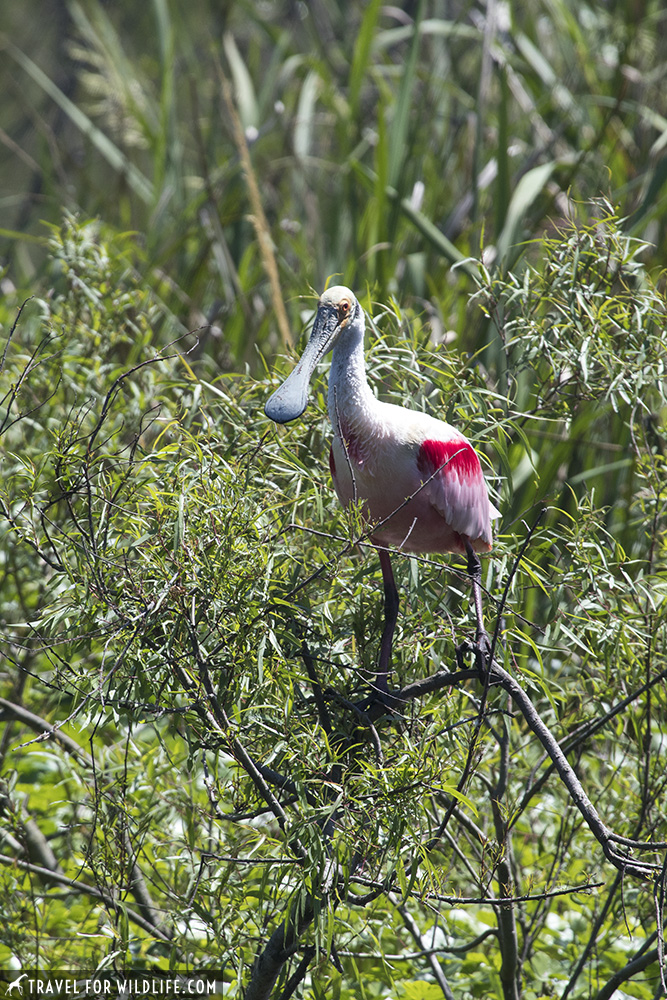
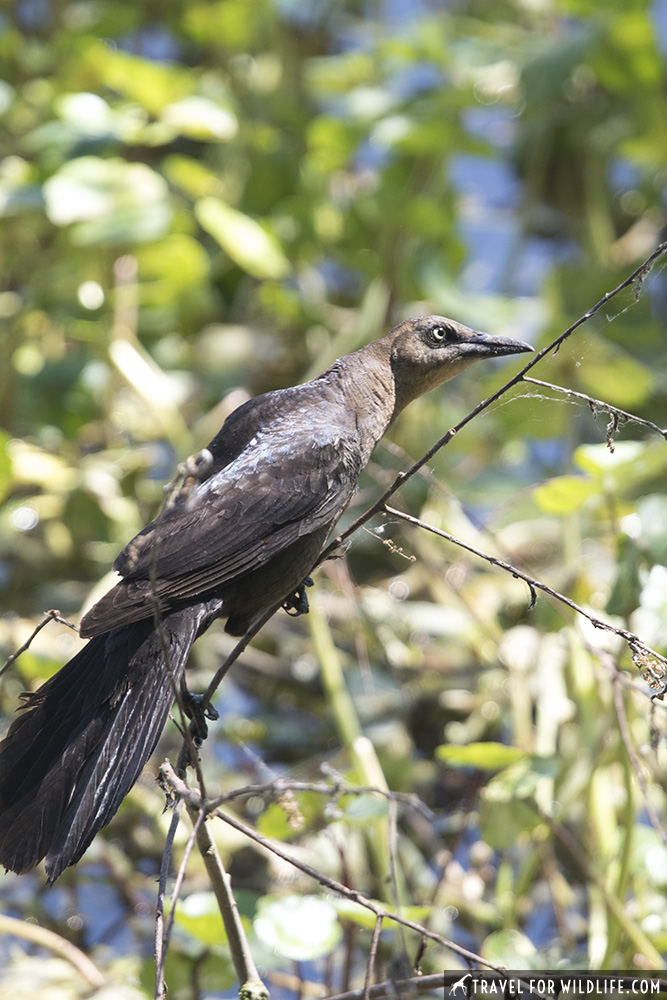

And it’s not just birds who call Smith Oaks their home. Along its nature trails, you’ll spot butterflies, gar fish, turtles, and snakes as well. And it’s very possible that at dawn you could catch a glimpse of a fox or a bobcat wandering around Smith Oaks Bird Sanctuary. The rookery at Smith Oaks is a U-shaped predator-free island in the middle of Claybottom pond. It is a favorite spot for thousands of waterbirds to raise their chicks. The birds that nest here are year-long inhabitants and don’t migrate. If you visit outside the breeding window, you’ll still see them, but the best time to come visit is at dusk, when they all come back from feeding at the marsh to roost.

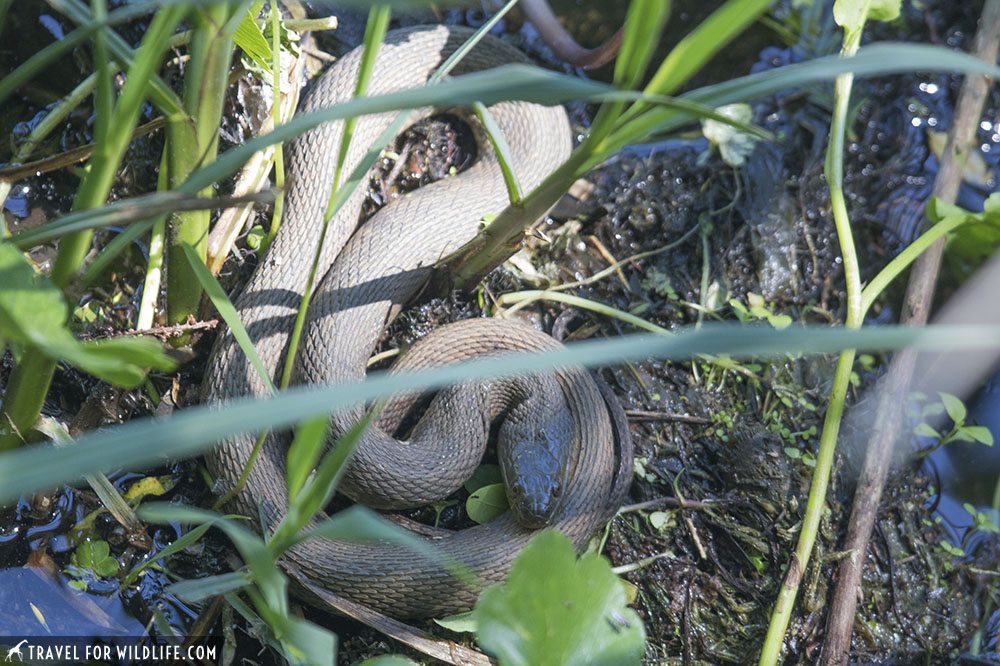
If you are into bird behavior I’d suggest you take some time to sit at one of the shady viewing platforms, binoculars in hand. You’ll be rewarded with hours of nesting and feeding behavior. If you are a photographer, I found the rookery as good as the Anhinga trail in the Florida Everglades. And bring your 500mm lens.
Smith Oaks rookery is located on High Island, open year round and the entrance fee is $8.
Cattail Marsh Scenic Wetlands & Boardwalk
Cattail Marsh is part of Tyrrell Park and operated by the city of Beaumont. Cattail Marsh is 900 acres of levees, ponds, and mudflats. There is also the famous 520-foot boardwalk with two viewing platforms, and over 8 miles of gravel roads where you can walk and bike. These roads will take you around Hildebrandt Bayou and Willow Marsh Bayou.

Cattail marsh is home to over 250 species of birds. Some of these are Wood, Ruddy, and Ring-necked Ducks, Cinnamon Teal, Fulvous and Black-bellied Whistling-Ducks, Greater White-fronted, Snow, and Ross’s Geese, Tufted Titmouse, Pied-billed and Least Grebes, Neotropic and Double-crested Cormorants, Wood Stork, egrets, herons, night-herons, ibises, White-eyed Vireo, American and Least Bitterns, Common and Purple Gallinules, terns, gulls, Black-necked Stilt, Yellow-billed Cuckoo, American Wigeon, American Avocet, Least, Western, and Pectoral Sandpipers, Roseate spoonbill, Willet, Long- and Short-billed Dowitchers, Wilson’s Phalarope, Brown and American White Pelicans, King and Clapper Rails, Sora, Sharp-shinned and Cooper’s Hawks, Great horned owls, Fish and American Crows, Red-headed and Pileated Woodpeckers, kinglets, Merlin, swallows, American Pipit, Eastern Meadowlark, Ruby-throated Hummingbird, Black-and-white, Hooded, Pine, and other warblers, Orchard Oriole, Vesper, Chipping, and Savannah Sparrows.
Rare birds at Cattail Marsh: Great Kiskadee, Eastern Towhee, Olive-sided and Vermilion Flycatchers.


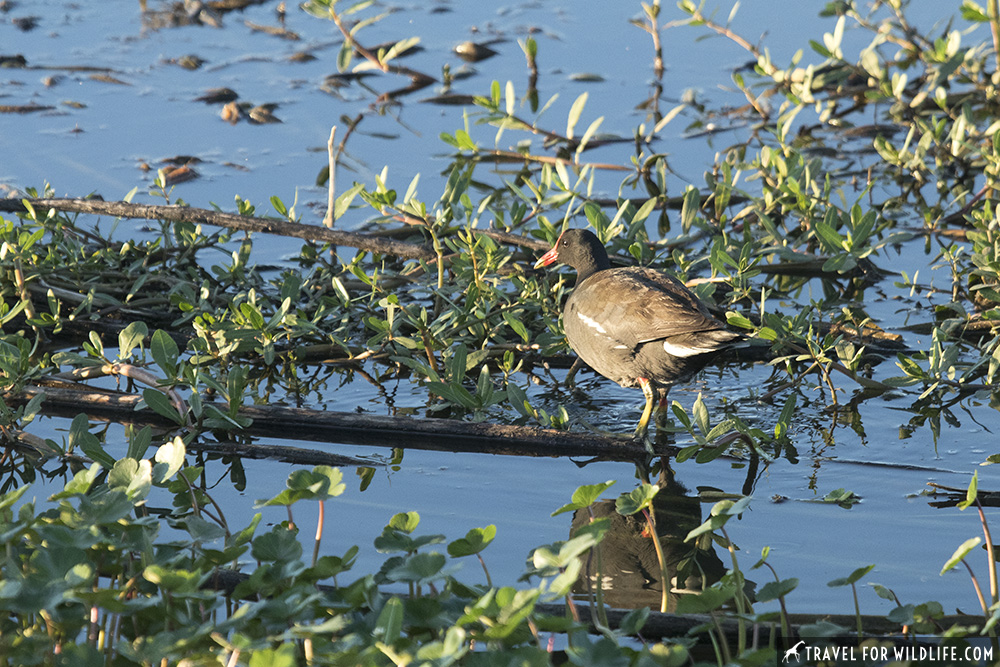

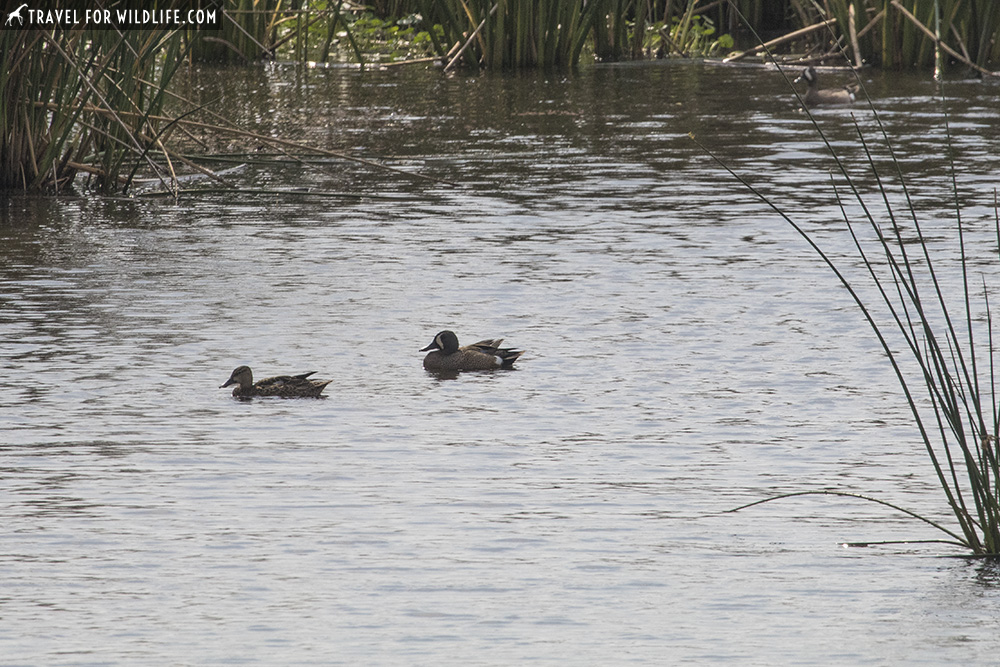

I highly recommend that you complete your visit to Cattail Marsh with a walk around the loop. You’ll get the chance to get some lower level photos of the waterbirds and alligators and also you might get a glimpse a bobcat (I was told there’s a regular one that visits in the evenings) or a boar (we saw one). You’ll also get the chance to see the little things like butterflies, bumble bees, and flowers. Remember that alligators also live here, so don’t go walking on high grass. And do not feed them.
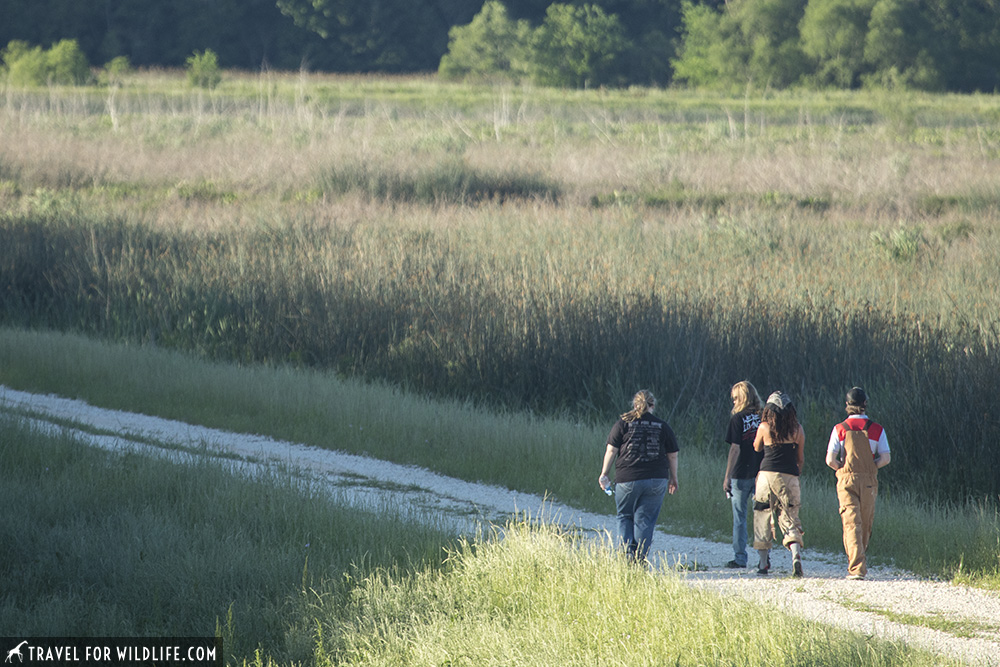

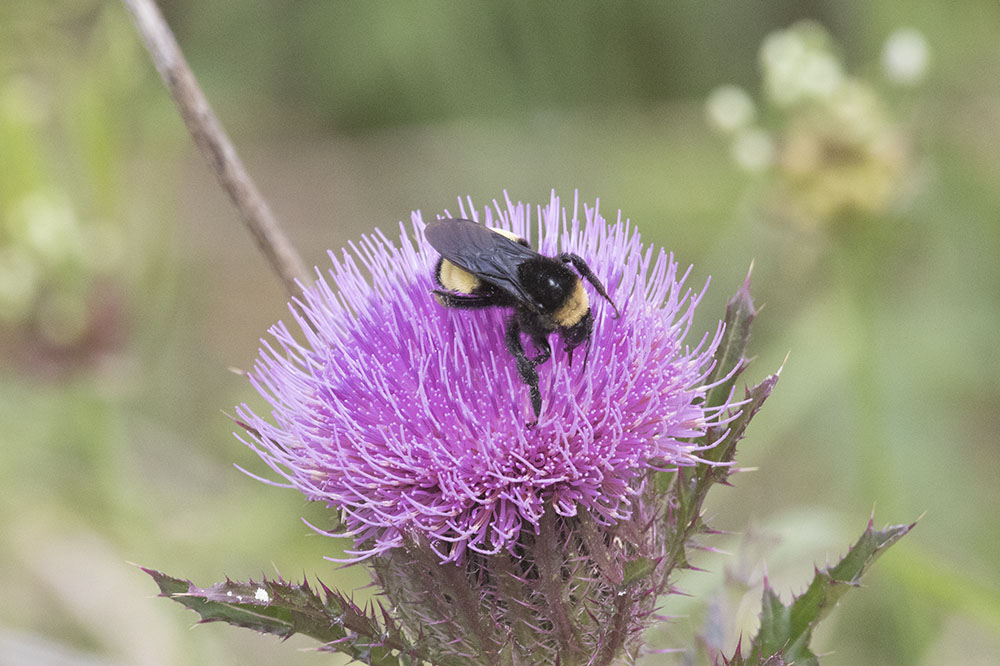
What is really interesting about Cattail Marsh is that it was built as a way to treat the city wastewater and receives flow from the main water treatment processing plant. This is actually the last step in this natural water treatment!
Check out the Cattail Marsh live web cam feed to see what’s going on.

Sabine Woods Sanctuary
Sabine Woods sanctuary is 17 miles from the town of Port Arthur. This sanctuary for North American migratory birds is owned by the Texas Ornithological Society and consists of 27 acres of oak woods, grassland, and swamp. There are also some fruit trees which the birds love. After seeing so many cedar waxwings on the mulberry trees I went home and I bought a red mulberry tree. This is another one of the birds sanctuaries where I wished I had more time. There were a few benches, here and there, a bird bath, and some other spots (like the mulberry trees) where I could’ve easily stayed for hours.
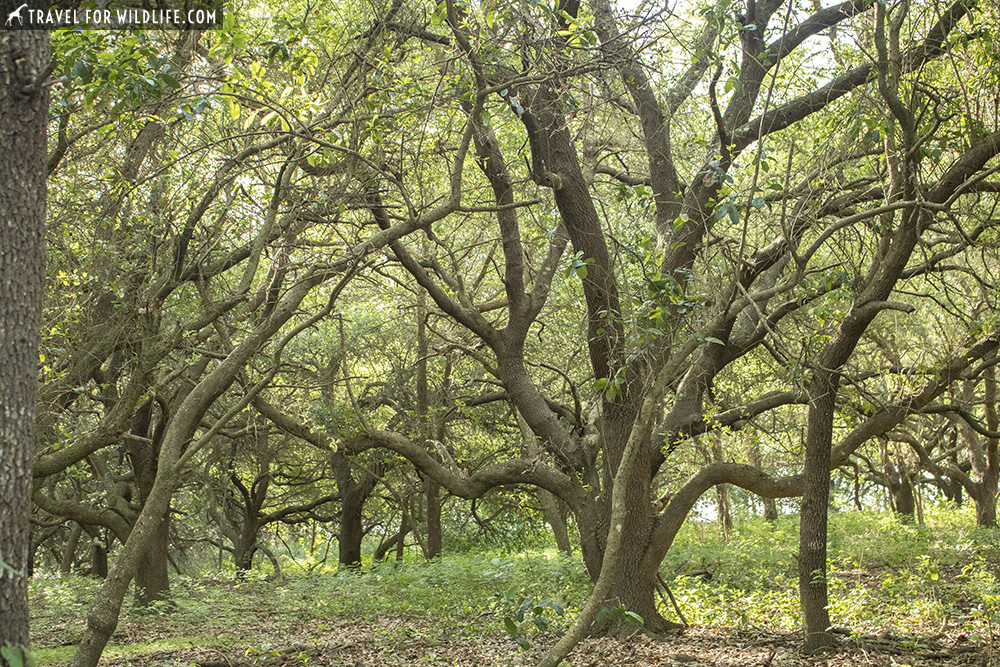


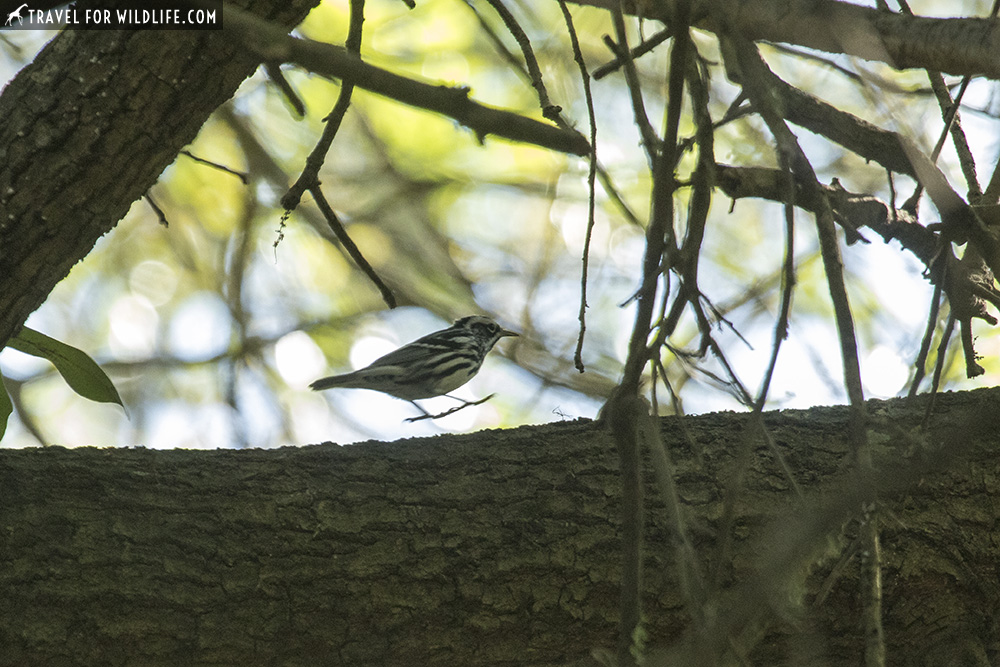
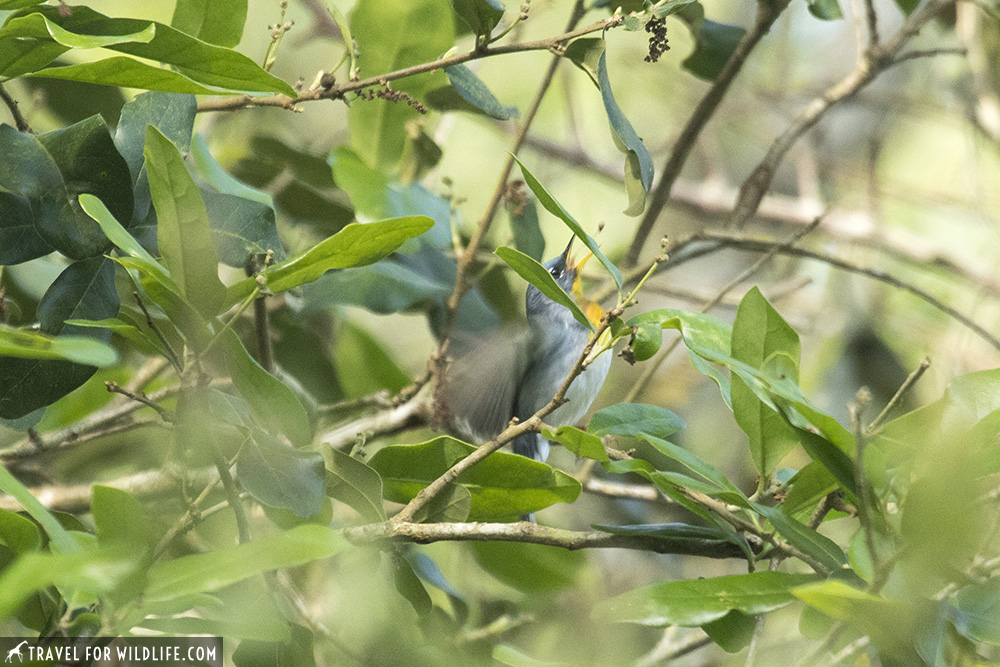
Birds found at Sabine Woods: warblers, orioles, tanager, flycatchers, vireos, and migrating songbirds.
You’ll also get to see some armadillo holes! (maybe not too exciting for some people, but armadillos still haven’t made it where I live, so this was an extra point for Sabine Woods from me)
This is one place where you’ll need bug spray and be prepared to walk in the mud as some parts of the paths are in grassland and can get really muddy.
Fee is $8 per day, free for members of the Texas Ornithological Society.

Sea Rim State Park
Sea Rim State park is a wonderful coastal state park managed by Texas Parks & Wildlife. A total of 5.2 miles of Gulf shoreline and over 4,000 acres of marshland makes this park a great place to spot coastal birds of Texas in the gulf coast.


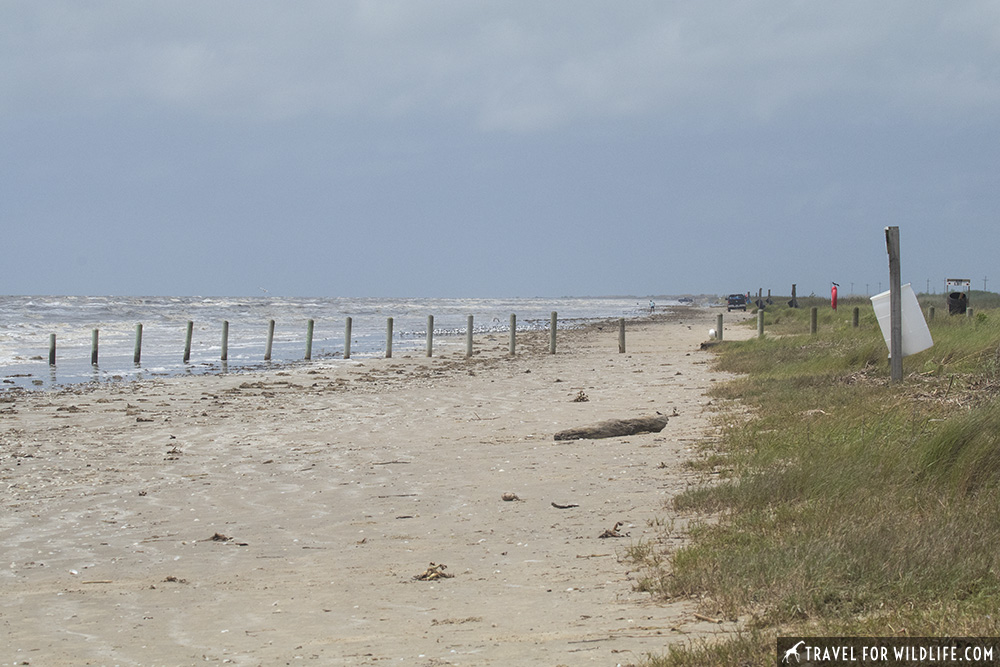
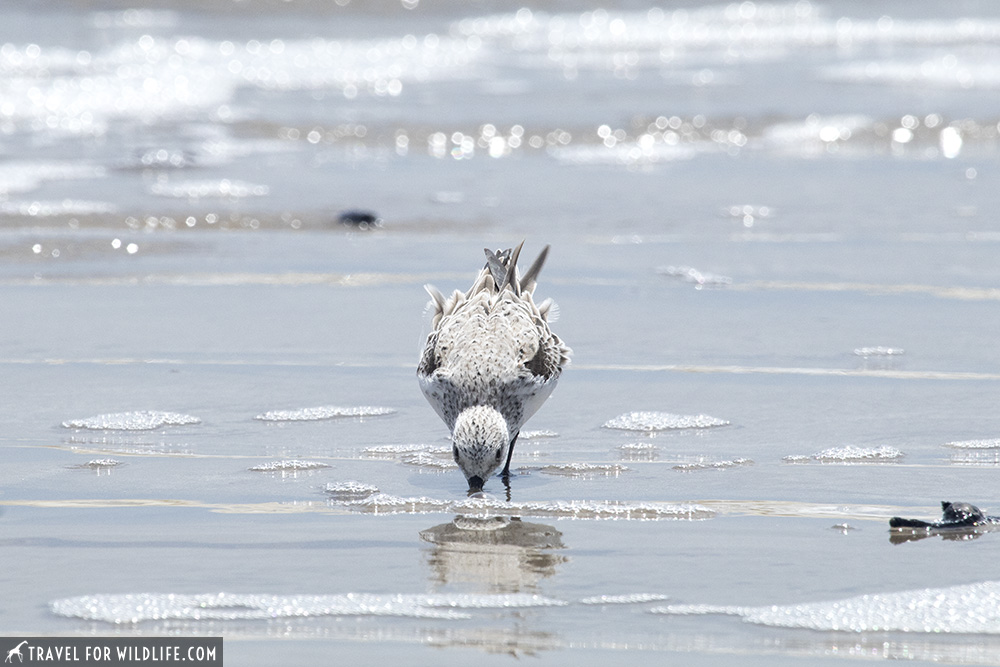
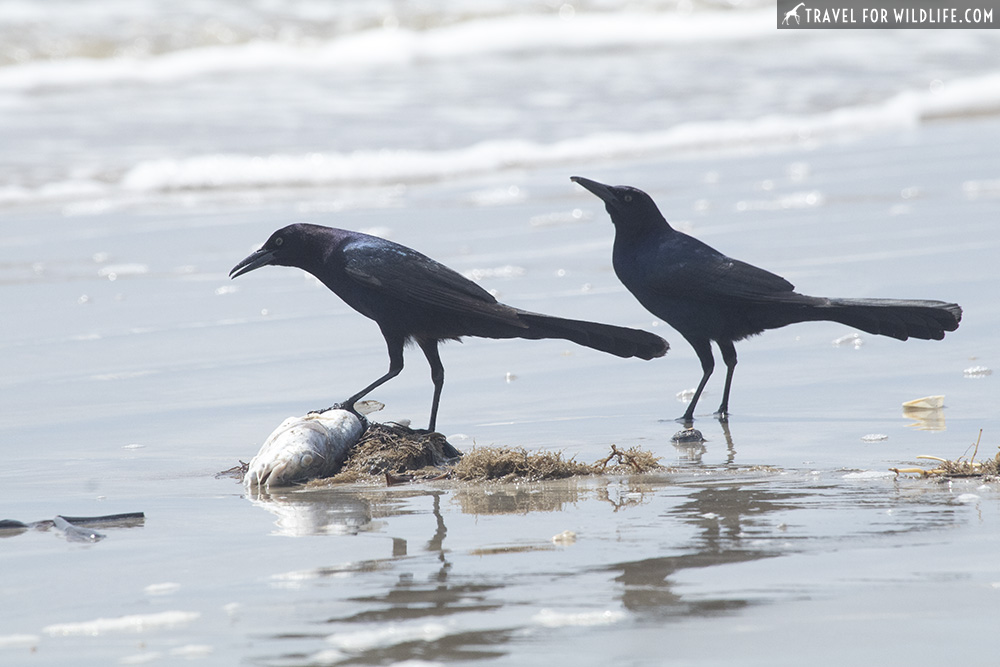
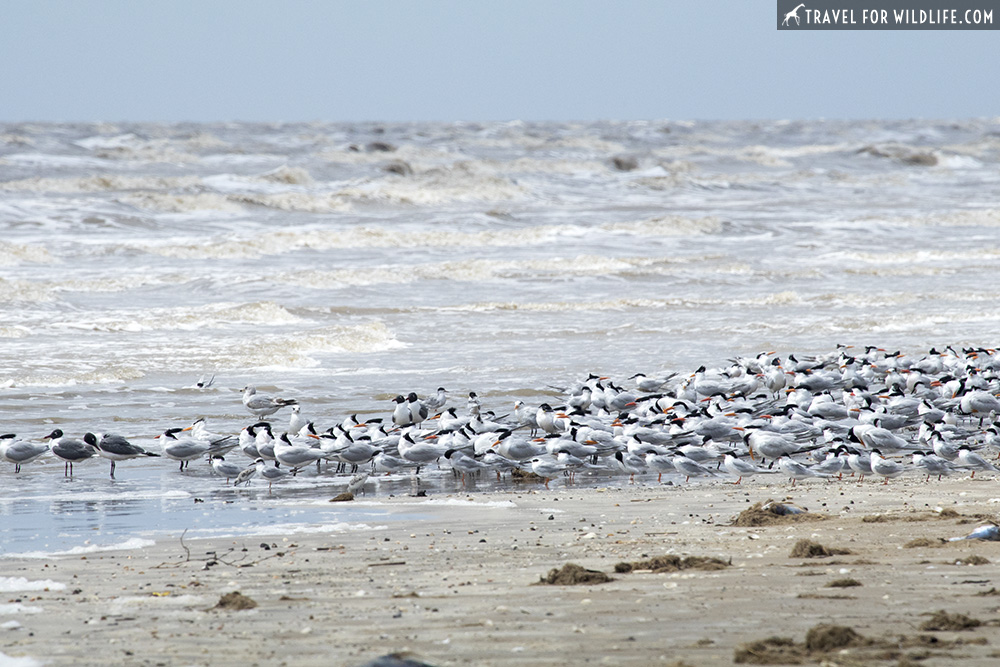
There are many recreation possibilities at Sea Rim State park, like camping, horse riding, fishing, and of course birdwatching. Walk along the Gambusia Nature Trail Boardwalk that takes you along the marsh. At the end of the boardwalk you’ll enter the beach where you can spot shore birds galore.

Apart from spotting Texas shore birds, you can also see alligators at Sea Rim State Park marshes, so be mindful when you walk around the park.
Bolivar Flats Shorebird Sanctuary
Bolivar Flats is located south west of Beaumont, and you can find three different habitats here: mud flats, salt marsh, and beach. This is what makes Bolivar Flats a great place to see Texas shore birds, since different habitats attract different birds in a relatively small area.
It is not an exaggeration to say that hundreds of thousands of birds find their way here every spring. This place is packed! When we visited we saw a group of almost 3,000 American avocets! We also saw Brown pelicans, Piping plovers, Snowy terns, Royal terns, and lots of Sandpipers.
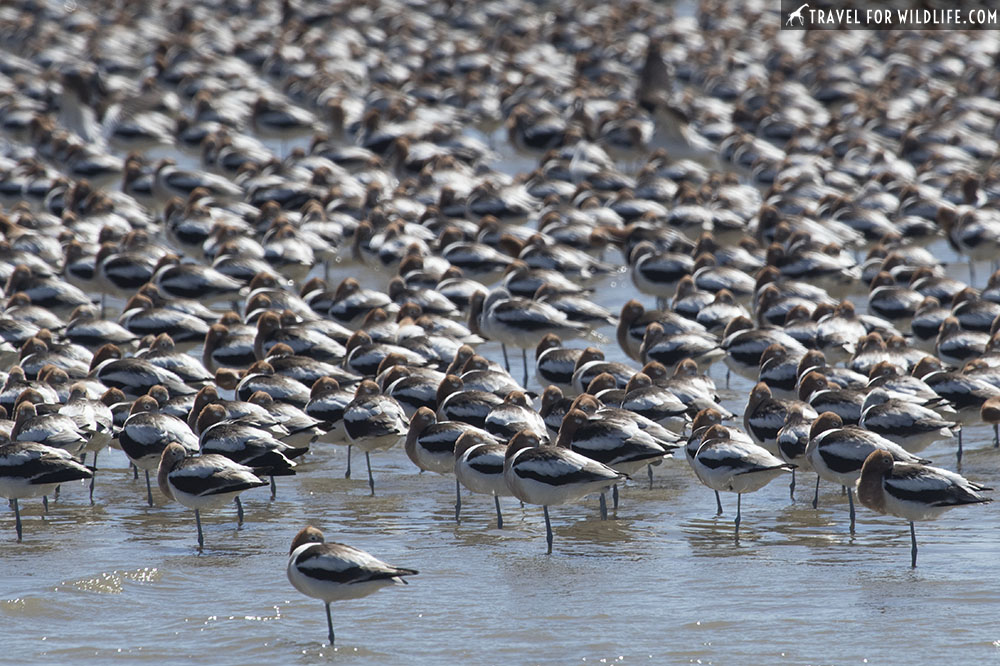
Bolivar Flats Shorebird Sanctuary is an International Site in the Western Hemisphere Shorebird Reserve Network.



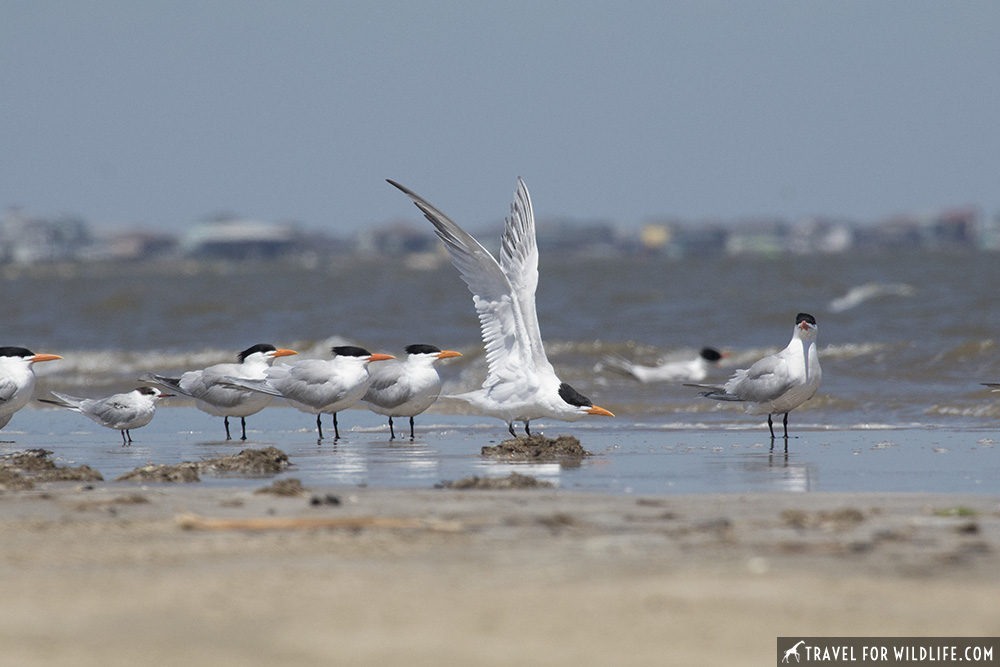

Angelina National Forest
A 2 hour drive north from Beaumont, this forest is a great spot to try and catch a glimpse of Pine warblers, the uncommon Bachman’s sparrow, and woodpeckers. Keep an eye out for the endangered Red-cockaded woodpecker (amount of individuals globally are estimated to be between 10,000 and 20,000). The possibility of seeing one is a very good reason to visit Angelina National forest. This beautiful woodpecker is found in mature longleaf pine savannas, so your best bet is to stroll around quietly in the pine forest at Angelina and listen for its call.
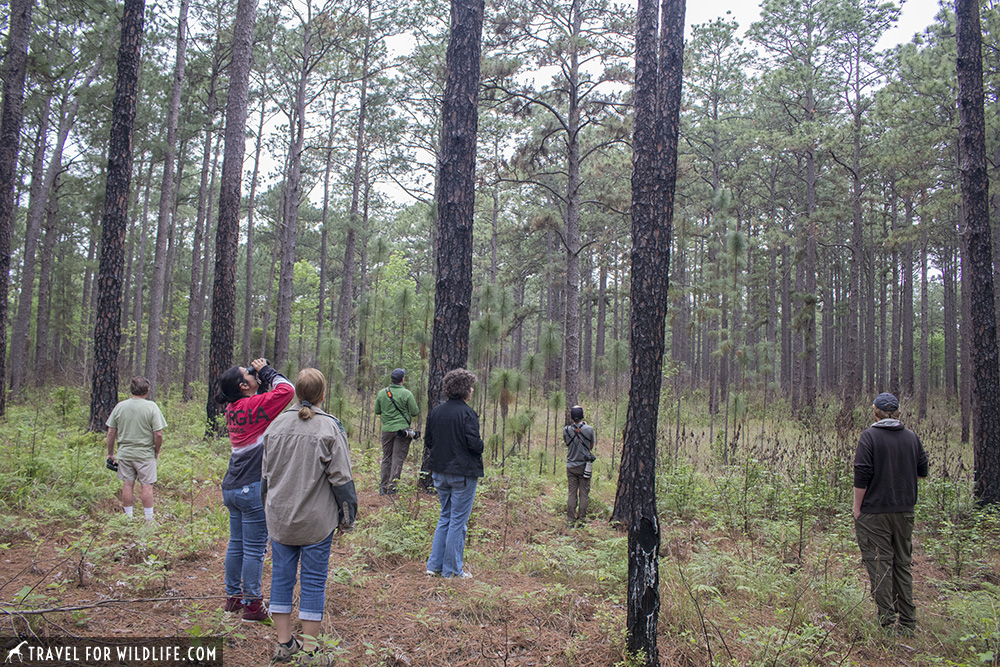
If you don’t have time to drive all the way there, Big Thicket National Preserve is a great alternative, only 40 min from Beaumont.
Where to see Hummingbirds in Texas
Texas is a great place to see hummingbirds. Having said that, Texas is a big place, and in the Beaumont area main hummingbird species is the Ruby-throated hummingbird. Still, you have a small chance ( consider yourself super lucky if you do see one!) to spot one of the following: Black-chinned hummingbird, Rufous hummingbird, Calliope hummingbird (rare), Anna’s hummingbird (rare/fall-winter), Broad-billed hummingbird (rare), Broad-billed hummingbird (rare), Buff-bellied hummingbird.
Most of these species can be found further west of Beaumont, although you can get some isolated sightings along the coast of Texas. If you do want to see more hummingbird species, I would maybe combine your visit to Beaumont with another area more prolific on hummingbird sightings.
You’ll see higher numbers during their spring migration in march and during their fall migration in September. You can keep track of the hummingbird migration at Hummingbird Central (with maps) and see how well this aligns with your visit.
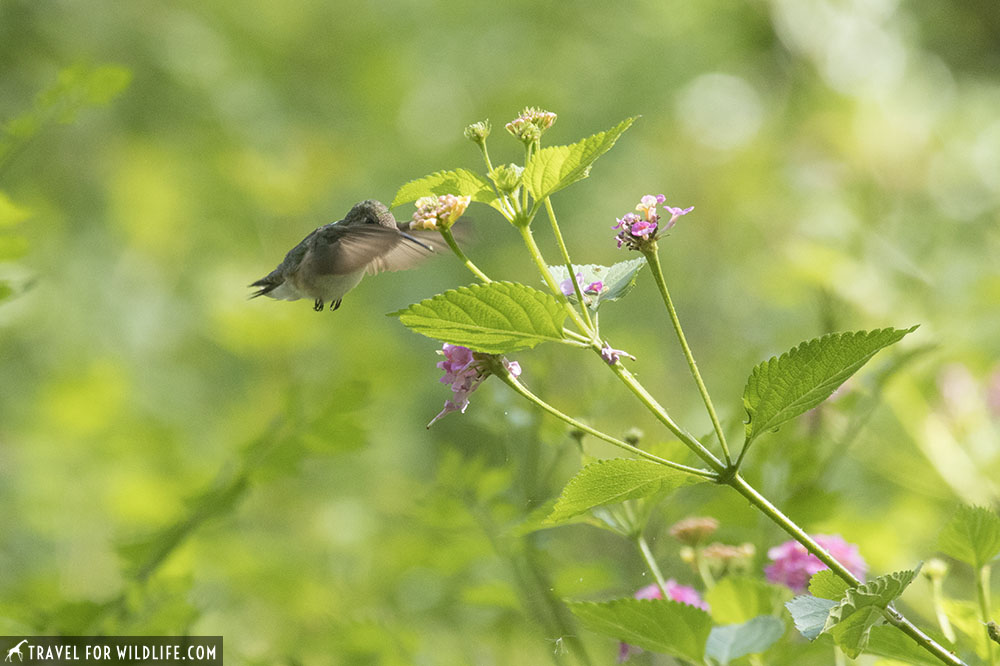
A Note on Responsible Bird Watching
Remember that most of these birds have flown vast distances to get to these small pockets of habitat. They are tired and they need to feed, rest, and gather energy to continue their long journey. Respect their space.
Never approach birds for a photo. Use a telephoto lens. If you see that the behavior of the bird changes while you approach it is because you are upsetting them. Slowly turn around and view from a safe distance.

Some birds are nesting. Please respect them and obey the signs. If you disturb them they might leave their nest leaving the eggs/chicks exposed to predators and the elements.

Be quiet and respectful.
Stay on paths.
If you see trash, fishing nets, fishing lines, or anything that doesn’t belong there, please pick it up and put it in the trash. You will be saving lives.

Also, take care of yourself! Wear a hat, sunscreen, and keep hydrated.
Visiting Beaumont on a birding trip
You can definitely plan your visit independently or you can join a specialized birding tour of the golden triangle of Texas. If you are looking for a birding company that organizes tours to this area Sabrewing tours just designed theirs. I would join them if I was you! They are super experts, they really know the area, and can also help you with photography.
I stayed at a couple of hotels and I can recommend the Port Arthur Hampton Inn. The other one where we stayed was very noisy and the walls were paper thin. You can find other hotels in Beaumont here.
What to take on a birding trip to Texas
If you want to bring a bird guide, we recommend the Sibley Field Guide to Birds in Eastern North America. We didn’t find a dedicated birds of Texas book, and the Sibley is one guide you can use elsewhere and not just when you go birding in Texas.
During the April migration, Texas is already getting hot. And muggy. Bring some summer clothing with a couple of outer layers in case temperatures drop. Don’t forget a sun hat and sun glasses.
Mosquitos. Yes, they are here. Wear closed walking shoes, long pants, and take a long sleeve layer. Use repellent. People swear by the 40% DEET insect repellent spray, but I just hate those. Yes, they work and I still use them sparingly. I’ve recently tried insect repellent made with lemon eucalyptus oil and while the effects don’t last too long, they do work. I’d rather keep on applying than use a high DEET product. Try Murphy’s Naturals Lemon Eucalyptus Oil Insect Repellent.
Which birding binoculars should you take? We have found that the best binoculars for birding are the 8×32. As a rule I normally look at what gear our trip leaders use. During this birding trip to Texas, our guides used 8×32 ZEISS binoculars, one of their 8×32 models can be found here. If you go on an organized birding trip, your guides should have scopes for those times when binoculars aren’t enough, so I wouldn’t worry about getting a birding scope.
Other Hot Spots in Texas for Great Birding
- Lower Rio Grande Valley
- Big Bend National Park (don’t miss the Chihuahuan desert trail)
- Palo Duro Canyon State Park
- Port Aransas Nature Reserve
- Leonabelle Turnbull birding center
- Caddo Lake State Park
- Edinburg scenic wetlands
- Santa Ana National Wildlife Refuge
- Chisos Mountains
- Galveston Island
After this trip I can say that birding in Texas should be on every birders list. Time your visit well, and you can even get some lifers!
I was a guest of the City of Beaumont, but all opinions in this article are my own.


Cristina Garcia
Zoologist and wildlife photographer. She has worked in the field with jackals, wolves, cheetahs, & leopards. She serves on the Board of Directors of SEE Turtles, a non-profit sea turtle conservation organization.
Read her posts at Travel For Wildlife and see more of her work at Truly Wild, & Our Wild Yard.

Traveling Ted
Monday 22nd of July 2019
I was really surprised at the abundant bird life in Big Bend National Park and that is a mountain desert area, so I am not surprised to find out that there is even better places to bird in the state along the coast. Spring is my least favorite time of the year for outdoor activity, so I am glad there is something to do while it is cold and rainy. I went out a few times in the Midwest during the warbler migration and it was pretty cool. There were birds everywhere, even here in the Chicago.
cristina garcia
Monday 22nd of July 2019
Right? I really want to explore more around Texas. There's also the Rio Grande Valley Birding Festival (https://www.rgvbf.org/) in November which I'm interested to attend! So many birds!